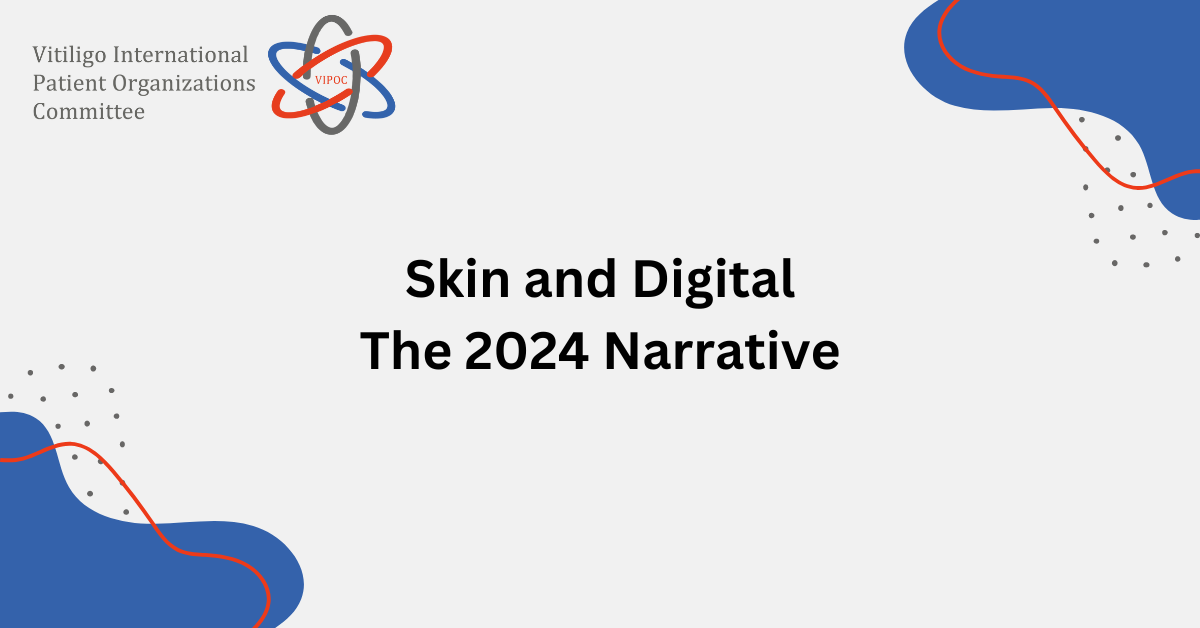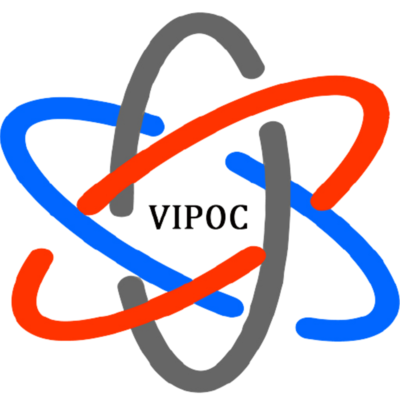Skin diseases affect 3 billion people worldwide,
1 or over 1 in 3 individuals, posing a significant yet often overlooked health challenge. These conditions extend beyond physical symptoms, adversely impacting psychological well-being and social interactions. Despite their considerable impact, skin diseases remain underprioritized in public health discussions, underscoring the need for a coordinated global effort to address these challenges.
2Disparities in skin health care are a significant issue, resulting from the unequal distribution of treatment resources within countries. This underscores the need for innovative solutions to bridge the gaps in care. Digital technologies are a promising avenue despite barriers like the lack of skin of color images in training data sets
3 and the digital divide. Teledermatology and artificial intelligence (AI) have the potential to revolutionize skin disease management.
4,5Generative AI enhances personalized treatment and predictive analytics, whereas the Metaverse introduces new avenues for immersive education and remote consultations. However, these advances are not a cure-all, compelling us to assess their risks.
Addressing skin diseases globally involves combating misinformation. Over 64.7% of publicly shared information is imprecise or confusing, and 80% of people believe the skincare industry is “rife with misinformation,” contributing to perceptions of widespread misinformation.
6,7Effectively addressing these issues requires acknowledging the problem, leveraging digital innovations, and fostering global collaboration among dermatologists. It is crucial to recognize privacy risks in low-income and middle-income countries (LMICs), where access disparities are greatest. This comprehensive approach to managing dermatologic conditions and cosmetic concerns is exemplified by the Skin and Digital Summit, a platform exploring these challenges.
8 This article presents the Summit proceedings from December 9, 2023, and February 1, 2024, at the International Master Course on Aging Science congress, reflecting collective insights and strategies.
The Impact of AI in Improving Access to Dermatologic Care
The global strategy on digital health recognizes its key role in achieving health-related sustainable development goals by improving accessibility and affordability of health services. Despite the availability of digital health solutions in LMICs, the WHO Digital Health Atlas reveals that digital health interventions (DHIs) often lack coordination, integration, scalability, and sustainability. In Africa, over 84% of DHIs focus mainly on “data mining” rather than enhancing service provision.
9 Moreover, the scarcity of dermatologists in LMICs, with less than 1 per million population, is a significant challenge. Leveraging DHIs is suggested to fill this gap.
10,11The ongoing digital health technology and machine learning revolution offers substantial potential to improve patient care and access, particularly in dermatology. However, existing dermatology DHIs in LMICs often remain at the pilot stage and lack scalability. Despite these challenges, limited teledermatology experiences in LMICs show feasibility and positive impacts in managing skin disorders at primary health care levels.
In conclusion, LMICs have many digital health solutions with diverse functions, but urgent attention is needed to address coordination, integration, scalability, sustainability, and equitable investment distribution in DHIs.
12 Ignoring these factors may exacerbate existing health disparities.
The Dual Impact of AI in Dermatology on Patient Health and Climate Change
Climate change is one of the century’s defining challenges. In 2018, the United Nations Intergovernmental Panel on Climate Change established a 1.5-°C global warming threshold, beyond which the planet will become increasingly inhospitable for human life.
12 In 2023, temperatures continued to break records, marking the hottest year on record and the first time global averages exceeded the 1.5°C mark. Climate change is the greatest threat to human health, as emphasized by 230 medical journals in their “Call for Emergency Action,” noting that fossil fuel emissions, global heating, and environmental degradation impact global health, disproportionately affecting vulnerable populations.
The dermatologic impacts are extensive, and the January 2021 issue of the
International Journal of Women’s Dermatology included a special issue on Climate Change and Dermatology.
13 The medical sector is a significant greenhouse gas contributor, yet emerging studies highlight technological solutions to mitigate the carbon footprint. Teledermatology reduces patient travel, hybrid scientific meetings minimize travel emissions, and sustainability practices in hospitals and clinics further contribute to environmental reductions.
The US Department of Health and Human Services has an office dedicated to climate change and health equity, offering numerous resources. The National Academy of Medicine’s Action Collaborative on Decarbonizing the US Health Sector underscores the importance of digital solutions in health care.
14 These tools not only help clinicians provide optimal patient care but also reduce the sector’s carbon footprint.
The Transformative Role of AI in Esthetics and Skincare
Although the dermatology and cosmetic dermatology sectors are slow to implement AI and digital technologies for patient benefit, the consumer-focused skincare industry is at the forefront of developing innovative solutions. The global beauty and cosmetics industry is projected to increase significantly due to consumer behavior shifts during coronavirus disease 2019 and advancements allowing consumers to interact directly with products. The projected compound annual growth rate is expected to rise by 20% by 2031, with North America leading other regions.
15 In the United States alone, the market size in 2022 was $3.2 billion, and this is expected to grow owing to new AI-based beauty devices and personalized skincare recommendations.
15The innovations of AI and augmented reality have given rise to “beauty tech,” integrating technology into cosmetics and beauty products. Tools like virtual try-on empower consumers, making shopping more personalized. At this year’s Consumer Electronics Show, L’Oréal introduced Beauty Genius,
16 an AI-powered solution delivering personalized, in-depth beauty diagnostics via smartphones. K-scan,
17 an AI-powered hair and scalp camera, helps hairdressers provide precise recommendations for salon and home treatment. Amore Pacific’s Lipcure Beam integrates lip diagnosis, care, and makeup application.
18 However, Shiseido’s personalized skincare system Optune was recently discontinued, illustrating that the adoption of beauty tech devices does not always have staying power.
19FACE by Galderma simulates injectable treatment results in real time using digital facial assessments.
20 Esthetic devices now incorporate sensors, making cosmetic treatments safer and more effective for different skin types, with more ground-breaking developments expected.
The excitement around AI in skincare and beauty is tempered by challenges like data bias and ethical considerations. Diverse data sets are crucial to avoid perpetuating biases and ensuring solutions serve all skin types and conditions. Ethically, it is vital to prevent AI from reinforcing harmful beauty standards and instead promote a multifaceted global beauty ideal. We must also navigate privacy concerns, regulatory hurdles, and ensure the reliability of AI applications. A cautious and thoughtful approach is essential to address these challenges effectively.
Will Multimodal Large Language Models Lead to the Demise of Dermatology as a Specialty?
The rapid advancement of multimodal large language models (MLLMs), particularly Chat Generative Pretrained Transformer (ChatGPT)-4, is revolutionizing health care, especially in medical education and practice. The success of ChatGPT-4 in the US Medical Licensing Examinations and other complex tasks highlights its importance, prompting a reevaluation of medical education mechanisms and core values.
21A study comparing an AI chatbot (ChatGPT) to verified physicians in responding to patient queries on Reddit’s r/AskDocs revealed that the chatbot’s responses were preferred for their quality and empathy in 78.6% of cases.
22 Evaluated by licensed health care professionals, the chatbot consistently produced longer responses, outperforming physicians in both quality and empathetic communication. Specifically, chatbot responses were 3.6 times more likely to be rated as high-quality and nearly 10 times more likely to be considered kind or empathetic.
22 These results highlight the potential of AI chatbots in improving patient communication and reducing clinician burnout, warranting further exploration for possible clinical integration.
Multimodal large language models can also process extensive medical data and images, generating reasonable reports and summaries that could enhance diagnostic efficiency and patient care. However, acknowledging MLLMs’ limitations and finding the right balance between technology and human expertise is crucial. In medicine, true wisdom involves understanding the complexity of psychosomatic-environmental interactions and making sound judgments despite incomplete information. It requires building patient trust and providing holistic care beyond diagnosis and treatment, something rooted in human experience that AI cannot easily replicate. However, MLLMs should complement, not replace, human experts.
These models promise significant advances in medical education and practice. By leveraging their strengths while maintaining critical and innovative thinking, technology can enhance human expertise, fostering better patient care and a healthier society.
Unraveling Misinformation: Leveraging Large Language Models to Transform Health Care and Dermatology
Large language models like ChatGPT are transforming health care by reducing misinformation and improving access. Their ability to identify complex diagnoses redefines medical consultations, advocating for synergy between human and AI expertise. With a purported intelligence quotient of 155, ChatGPT’s intelligence represents a significant advancement in AI.
23 Large language models help clinicians stay abreast of rapidly expanding medical knowledge by supplementing their skills.
Caution is still essential owing to misinformation risks, particularly in dermatology, which can endanger health outcomes. Large language models can parse vast medical texts, support better AI-dermatologist cooperation, and improve primary care diagnosis of skin conditions, thus reducing the burden on dermatologists. However, continuous monitoring is crucial to avoid data drift and ensure algorithmic relevance and precision. “Federated learning” tailors large language models to region-specific data characteristics, providing relevant and diverse results.
Despite progress, the interpretability of AI requires caution. Awareness of AI’s limits, such as inaccuracies and “hallucinations,” alongside legal challenges around patient privacy, are crucial. Balancing AI adoption with patient trust and informed consent remains a significant priority.
24Evaluating ChatGPT’s Efficacy and Dermatologists’ User Experience in Dermato-Oncology: A Focus on Actinic Keratosis
The use of ChatGPT in dermatology can be guided by the study on its application dermato-oncology, particularly focusing on actinic keratosis, a precancerous skin condition.
25 The study aimed to assess ChatGPT’s reliability as an information source and to evaluate dermatologists’ user experiences and attitudes toward this AI tool. A set of 38 clinical questions encompassing patient education, diagnosis, and treatment were posed to ChatGPT, and the responses were evaluated by a panel of 7 dermatologists for accuracy, currency, and completeness. It excelled in patient education topics but faced challenges with diagnosis and treatment queries, notably in grading AK and offering up-to-date treatment recommendations. The responses were often verbose and sometimes overly alarmist about the risk of malignant transformation. Despite these issues, the dermatologists rated ChatGPT favorably in terms of user experience, highlighting its speed and efficiency. However, they criticized it for inaccuracy and verbosity, indicating a need for further development to enhance its suitability for clinical use. Its limitation is partly attributed to the training data and the models’ design, which prioritize language understanding over factual accuracy. Thus, although ChatGPT shows promise as a digital health technology, its current limitations in reliability and verbosity hinder its clinical utility.
Panel Discussion: The Metaverse in Dermatology, Cosmetic Dermatology, and Skincare-Simulation for the Future
The Metaverse, originating from the gaming world, uses virtual reality, augmented reality, and AI to create immersive virtual experiences that are significantly impacting health care. It excels in dermatology and skincare by providing detailed simulations that transform patient education, remote consultations, and procedural training, setting a new benchmark for interactive and precise medical care.
Two compelling panel discussions (summarized in
Tables 1 and
2) featuring diverse experts, including medical doctors and dermatology patient associations, have explored the potential of this digital realm to revolutionize the field, whereas acknowledging the challenges of integrating it into health care.
Incorporating the Metaverse into dermatology and skincare presents challenges, such as interoperability across platforms and the need for regulatory frameworks to address ethical, legal, and cybersecurity concerns. Accessibility and affordability issues highlight the gap between current technology and the goal of universal benefit. Addressing these challenges is crucial for the safe, equitable, and effective application of the Metaverse in enhancing patient care, emphasizing the need to make these technologies accessible globally.
Conclusion
The future of dermatology and dermatologic science looks promising, as highlighted by the “Pioneers in Dermatology and Venereology” series in the Journal of the European Academy of Dermatology and Venereology since July 2018. This monthly interview series with renowned dermatologists concludes with their predictions for the coming decade, paving the way for clinical dermatology innovation. Although the series primarily emphasizes clinical advancements, it also recognizes the growing impact of AI and digital technologies.
Moving forward, the concept of “radical dermatology” emerges as a critical force and will be addressed at upcoming Skin and Digital Summits. This innovative approach extends beyond the integration of digital technologies into general and cosmetic dermatology and skincare; it aims to reimagine and transform the entire field. Dermatologists and skin-trained health care professionals must retain their central role in care, ensuring human touch and expert judgment guide patient care in the increasingly digital age.
Despite the challenges in implementing digital technologies (
Table 3), radical dermatology envisions a future where digital innovations like AI, generative AI, and the Metaverse address current issues and anticipate future needs. This will enhance global dermatologic care access and counter misinformation, ensuring skin health care remains proactive, predictive, and patient-centered.
Potential Competing Interests
Mr du Crest is an employee and Director of SkinAid SAS and receives a salary from SkinAid. Dr Madhumita reports travel support for World Congress of Dermatology, 2023, and Rising Star Scholarship and leadership roles as Adjunct Research Advisor in Father Muller Medical College. Dr Zink reports Speaker’s honoraria for digital dermatology topics for AbbVie, Almirall, Amgen, Beiersdorf Dermo Medical, BMS, Celgene, Eli Lilly, Incyte, Janssen Cilag, Leo Pharma, MSD, Novartis, Pfizer, Sanofi-Aventis, and UCB Pharma and is a member of the board of directors of the German Society of Dermatology and leader of the Digital Dermatology group within this society. Dr Papier holds patent on decision support software (Patent No. 8538770); is a shareholder for Logical Images DBA VisualDx; and is an employee of Visual Dx. Dr Rosenbach reports institutional grants from Processa Pharmaceuticals; receives royalties for the textbook Andrews Diseases of the Skin as Editor; is a consultant for Processa, Merck, Janssen/J&J, and Novartis; and receives honoraria for multiple invited grand round lectures, all unrelated to this work. Dr Li reports grants from NSTC, Taiwan, and consulting fees from AESOP Technology. Dr Paul is a consultant for Global Medical Education Advisor Visual Dx; reports honoraria for UCL ehealth Unit postgraduate student workshop; receives travel support as BAD/AAD scholarship; is an advisor for dermatology image collection for spectrumlactation (
https://spectrumlactation.org); and is a Director, ANKP, and receives associated consultancy fees. Dr Hædersdal receives equipment support from Cherry Imaging, Cynosure, GME Medical, Lutronic, MiraDry, and Venus Concept; research grants from Leo Pharma, La Roche-Posay, and Venus Concept; consulting fees from La Roche-Posay and Procter & Gamble; and honoraria from Galderma and reports participation in data safety monitoring board of Galderma. Dr Freeman reports grants from National Institutes of Health; is a coauthor for UpToDate for COVID-19; reports travel support from International League of Dermatologic Societies supports to Dermatology meetings as Vice Chair of the IFD; and is a Section Editor,
British Journal of Dermatology. Dr Garibyan is listed as an inventor on the Magic Wand Initiative trademark, owned her employee, Mass General Hospital. All other authors report no competing interests.
Supplemental Online Material





